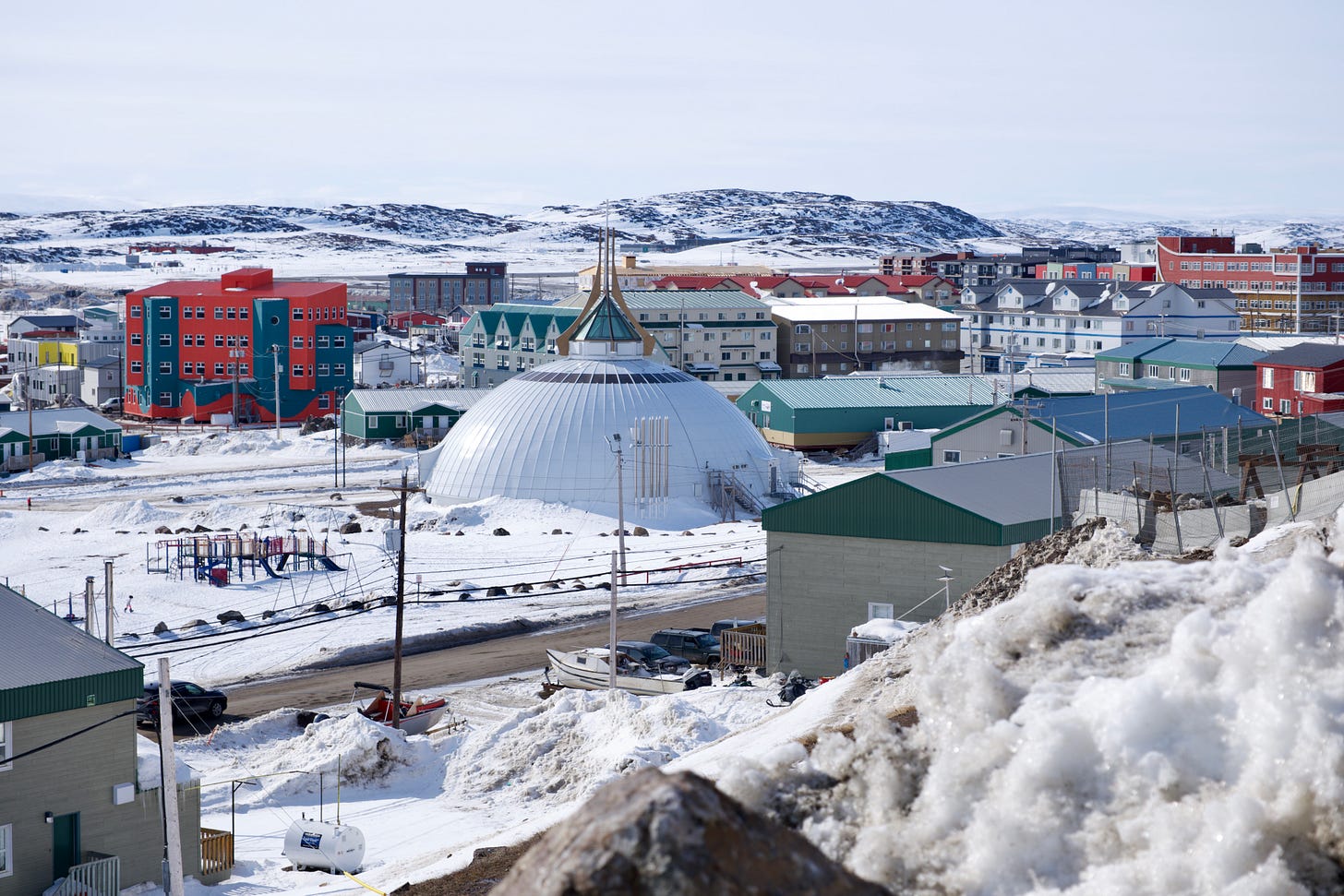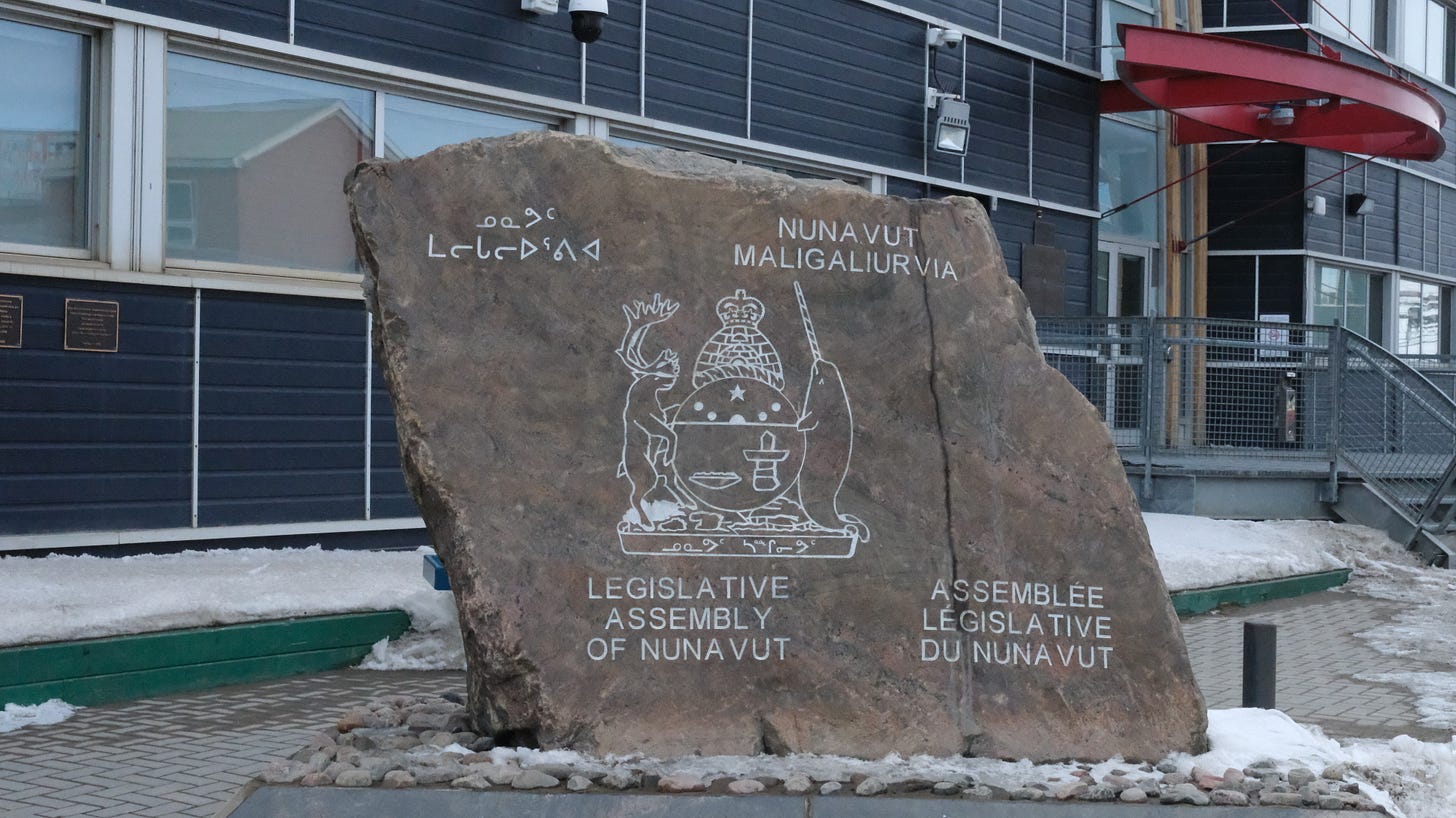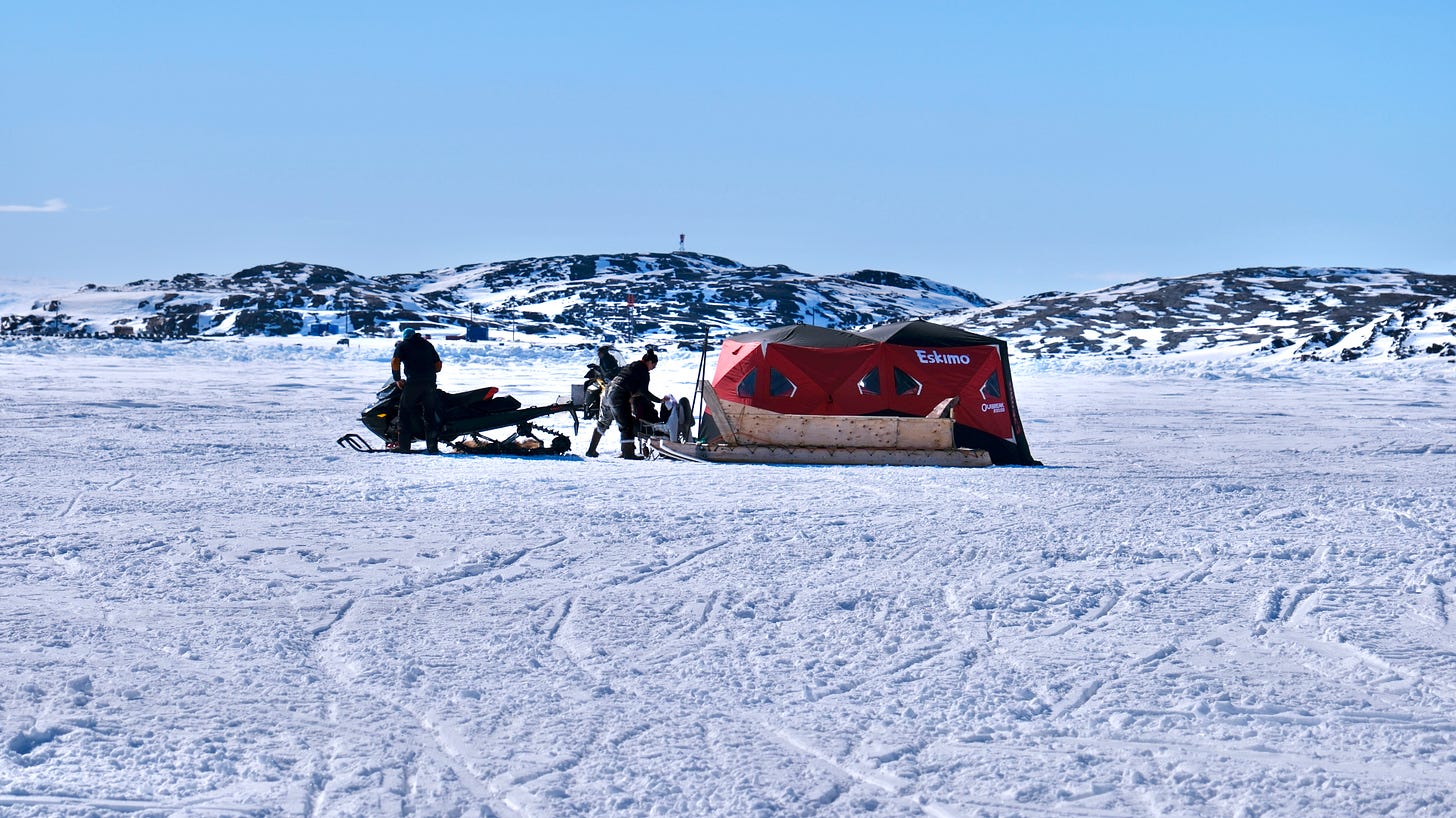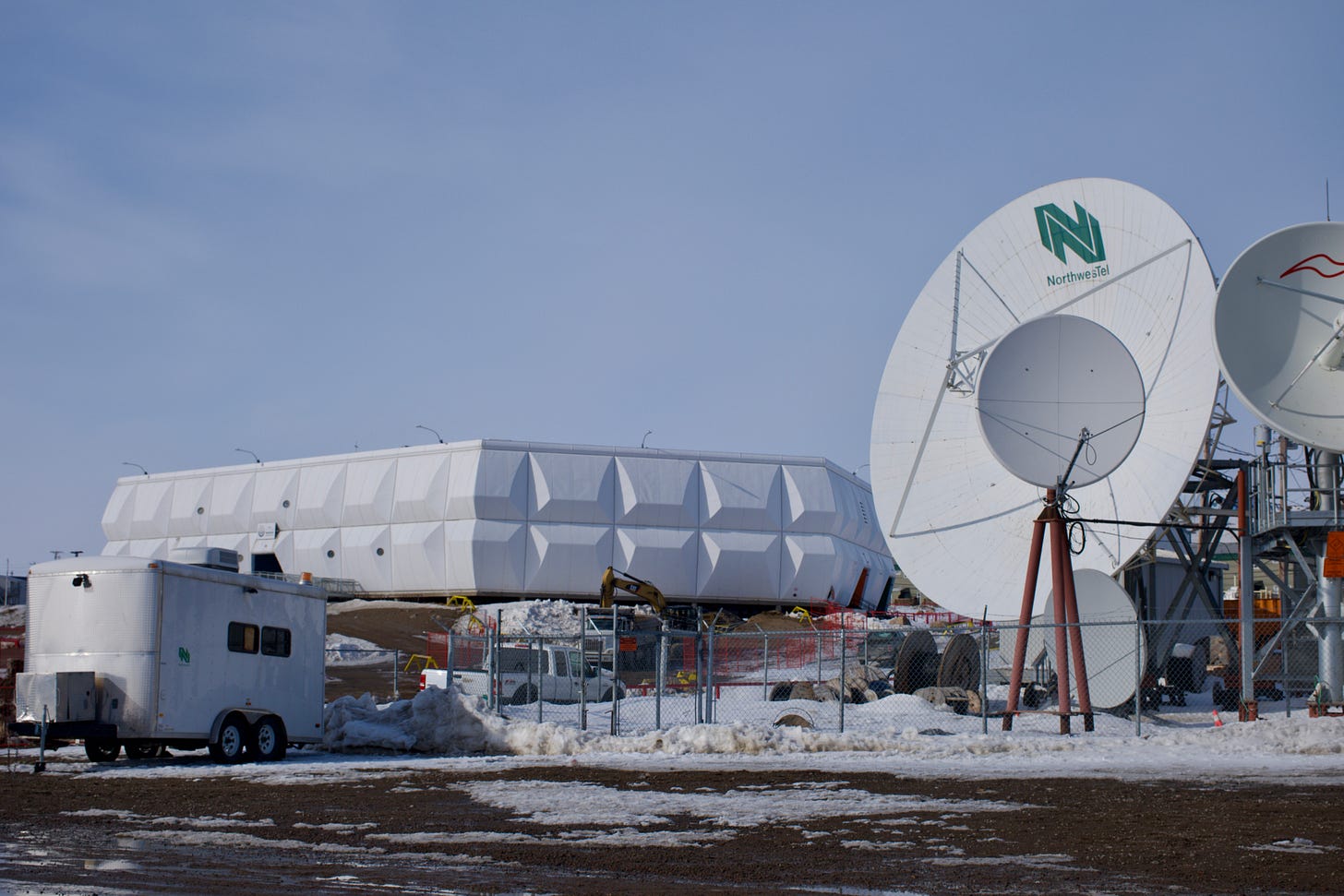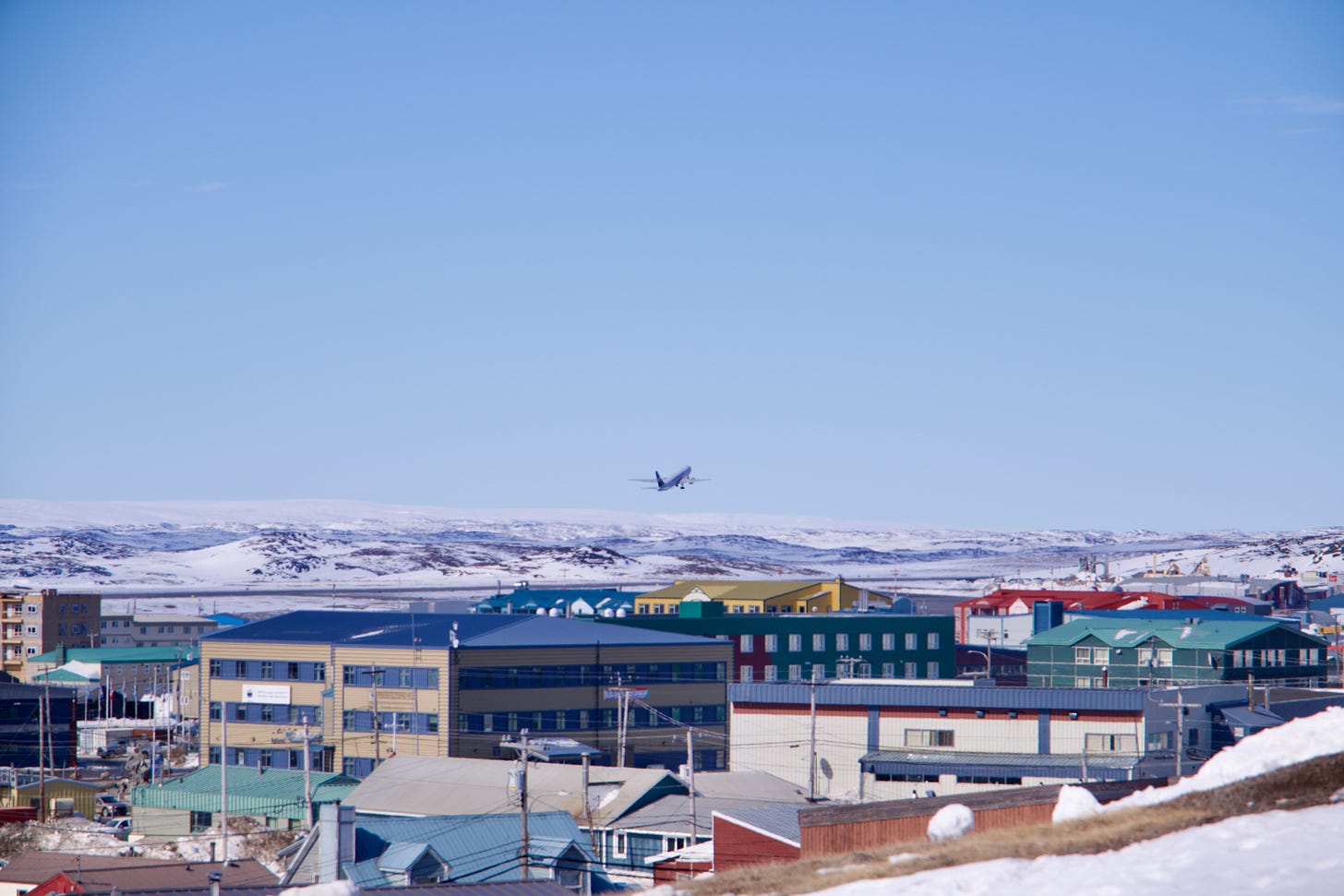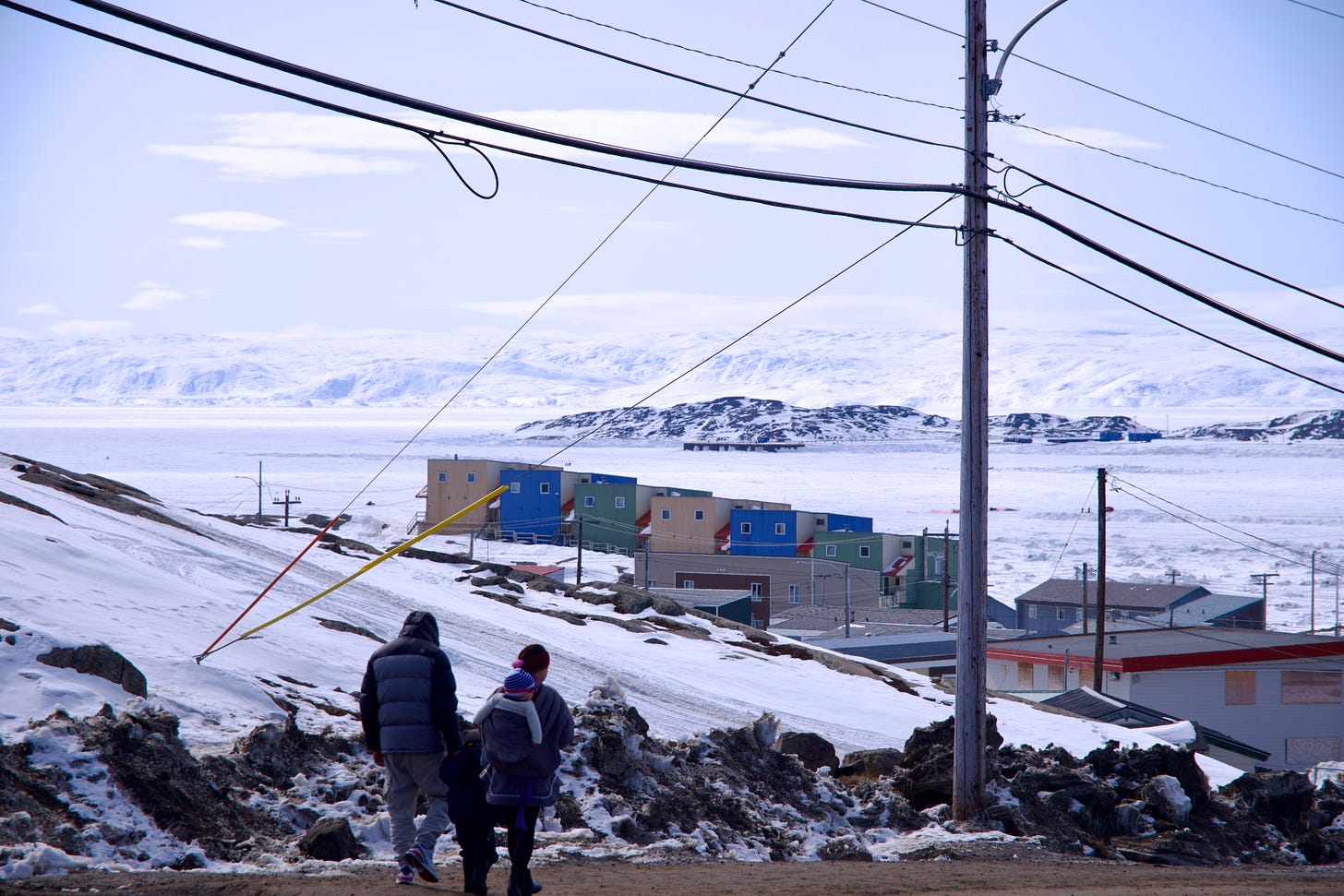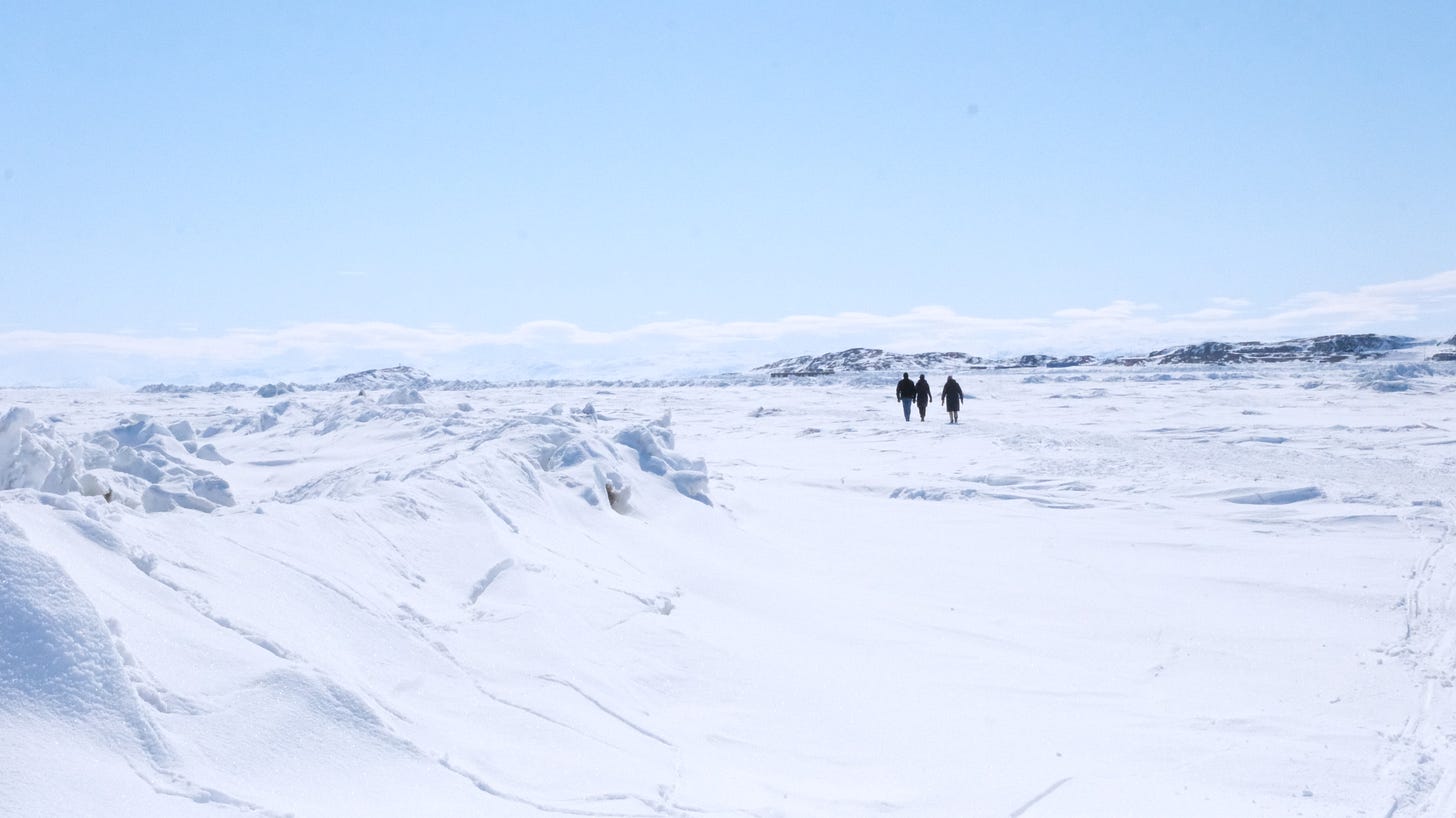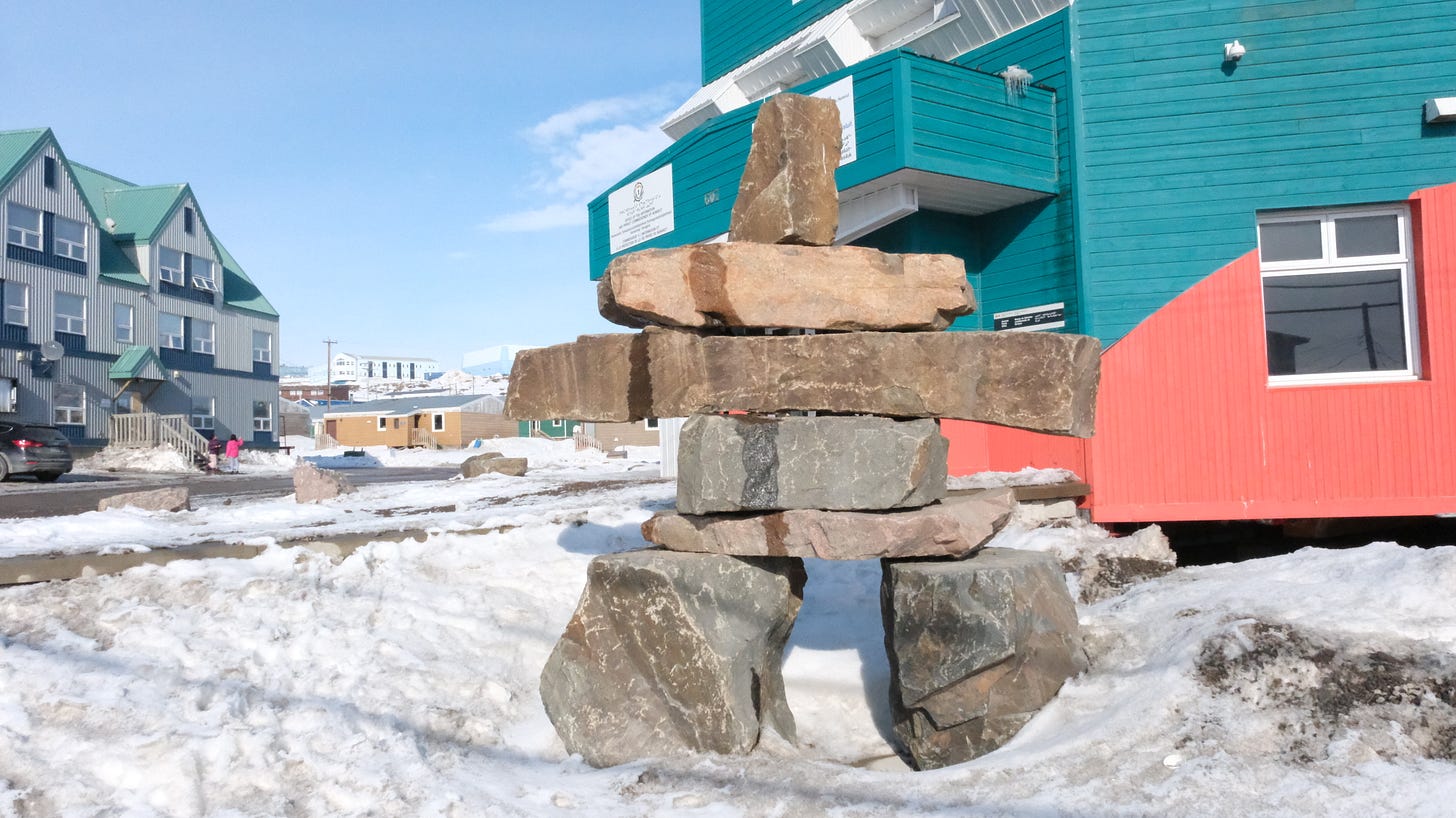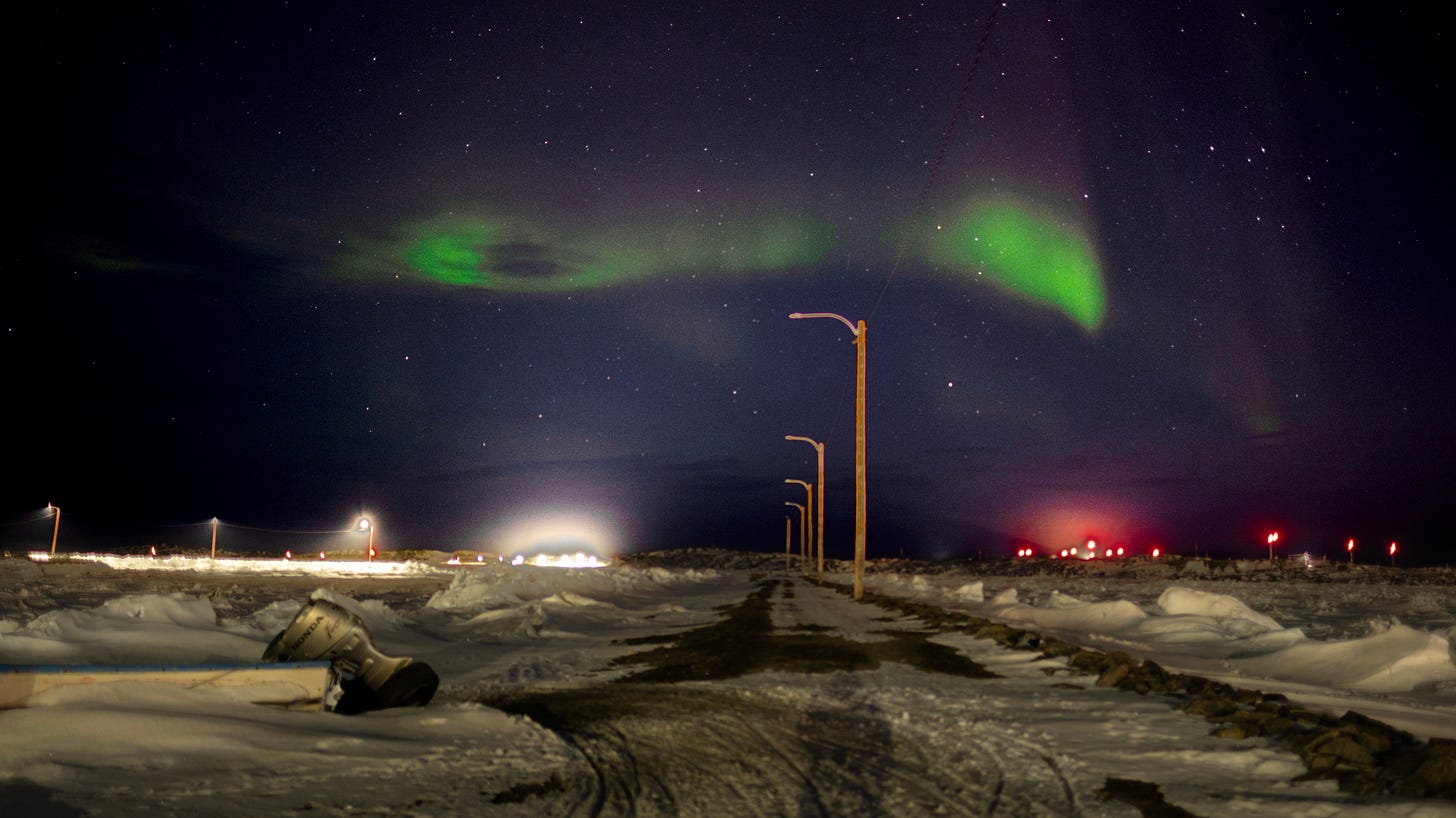You can just do things
I went to the Arctic. Here's some of what I saw.
Some of my followers may have seen my cryptic social media posts about going to the Arctic. No, it wasn’t a joke about fleeing from civilization. A few weeks ago, I made the trek to Iqaluit, pretty much the furthest north city in Canada you can get to without snowmobiles or bush planes. I’ll be writing about it, but I want to share some of what I saw (and the stunning views) with you here first.
Iqaluit is the capital of Nunavut Territory, a semi-autonomous region that most North Americans don’t know much about. It’s almost entirely Inuit, the indigenous Arctic people. (A single member of the group is called Inuk.) Who else would live there, other than nomads who know how to survive extreme cold and live off of sea animals? The autonomy arrangements are somewhat controversial, with some Inuit feeling that they are still exploited by Canada, and some non-Inuit resenting the explicit ethnic preference.
Other threats are pressing in from outside. Climate change is creating a scramble for the soon-to-be ice-free lands of the north. U.S. President Donald Trump’s infamous threats to annex Greenland and Canada are only a particularly ham-handed example. Canada, Russia, and Europe are all signaling their intention of military buildups in the north. China has staked its own claim by calling itself a “near-Arctic state,” a phrase that’s maybe too clever by half.
What do these powers expect to find up there? Vice President J.D. Vance laid it all out during a recent visit to Pituffik Space Base, the American ice fortress in Greenland:
Other nations are taking an extraordinary interest in Arctic passageways, and Arctic naval routes, and indeed in the minerals of the Arctic territories. We need to ensure that America is leading in the Arctic, because we know that if America doesn't, other nations fill the gap.
Pituffik and Iqaluit are both legacies of the same World War II era project, the Crimson Route, which sought to connect America to Britain via an Arctic air route. Although Inuit nomads had been roaming around the area since time immemorial, the first permanent settlement in Iqaluit was a U.S. Army airfield. The military continued to build up Iqaluit as part of the Distant Early Warning Line, a Cold War air defense network designed to stop Soviet bombers from coming over the Arctic.
Because it was a center for air transport and government presence in general, Iqaluit was made the capital when Nunavut won autonomy in the 1990s. An influx in investment from mining companies and the Canadian government has created lots of high-paying jobs, drawing in both Canadian internal migrants and foreign immigrants from some surprisingly warm places, including tropical countries. You’ll hear more about that in my writing.
The city is really visually striking. The architecture is a combination of spartan, boxy buildings — the necessarily of building in a harsh place where materials don’t come cheap — and traditional Inuit architecture. The centerpiece of the skyline is an Anglican cathedral built like a big igloo. (That’s an Inuit word, by the way.) The presence of radar dishes everywhere, along with the otherworldly Inuktitut alphabet, give Iqaluit a little bit of a science fiction vibe.
The harbor is frozen a majority of the year, from December to July, and it was thick enough to drive a truck over when I arrived. The tides still come in and out, leaving wave-shaped structures in the ice. There’s something absolutely mind-boggling about standing on what feels like solid ground on top of what would otherwise be open ocean. And the sea ice extends really far in every direction. It’s like a frozen steppe.
And, of course, the aurora borealis (northern lights) are visible at night, the streamers of solar radiation pulled towards the poles by the Earth’s magnetic field. (Iqaluit is too far south to experience true “midnight sun,” so you get a full day-night cycle throughout the year.) Inuit mythology has a very specific and evocative explanation for the lights: the spirits of the dead playing soccer with a severed walrus head.
Funny enough, there’s no premodern European mythology around the aurora, despite the fact that Scandinavian countries are famous for the lights today. The stories about aurora being Valkyries from Valhalla are a modern invention. Apparently the magnetic field has shifted over the centuries, and the only medieval Europeans who could see the aurora were Vikings in Greenland, who seemed confused and curious about the celestial glow more than anything. It is a baffling, awe-inspiring place for sure.




